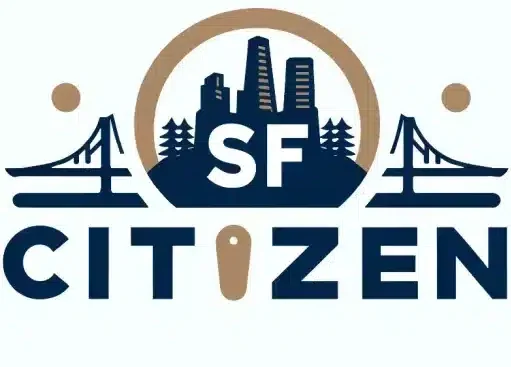San Francisco, a city renowned for its vibrant culture and thriving technology sector, boasts one of the highest median household incomes in the United States. With a median household income of $128,823, San Francisco significantly surpasses the national average, positioning it as a high-income city. However, this economic prosperity comes with its challenges, as the cost of living in San Francisco is among the highest in the nation, affecting housing, transportation, and daily expenses.
In This Article
The city’s proximity to Silicon Valley and its thriving technology sector play a significant role in shaping its economy and contributing to the high income levels. The influence of tech giants and startups has transformed San Francisco into a global innovation hub, attracting top talent and driving economic growth.
Key Points
- San Francisco’s median household income significantly exceeds the national average, positioning it as a high-income city.
- The cost of living in San Francisco is among the highest in the nation, affecting housing, transportation, and daily expenses.
- Proximity to Silicon Valley and a thriving technology sector contribute to high income levels and economic disparities.
San Francisco’s Economy and Income Levels
San Francisco’s economy is driven by a diverse range of industries, with the technology sector at the forefront. The city’s strategic location and innovative ecosystem have made it an attractive destination for startups and established tech companies alike. This concentration of technology firms has significantly contributed to the high median household income in San Francisco.
However, the high cost of living in San Francisco presents challenges for residents, even those with substantial incomes. Housing prices, in particular, have skyrocketed, making it difficult for many to afford suitable accommodations. Transportation costs and daily expenses also contribute to the overall financial burden faced by San Franciscans.
San Francisco Technology Hub and Silicon Valley Proximity
The influence of the technology sector on San Francisco’s economy cannot be overstated. The city’s proximity to Silicon Valley, the global epicenter of innovation, has fostered a symbiotic relationship between the two regions. Many tech professionals choose to reside in San Francisco while commuting to Silicon Valley for work, further driving up income levels in the city.
The high salaries offered by tech companies have a significant impact on the overall income status of San Francisco. The demand for skilled professionals in the technology industry has led to fierce competition among employers, resulting in generous compensation packages and a concentration of high earners in the city.
Bay Area Income Disparity and Social Implications
Despite the high median household income, income disparity within the Bay Area remains a pressing issue. The Gini coefficient, a measure of income inequality, highlights the significant gap between the wealthy and the less affluent in San Francisco. This disparity is particularly evident in communities such as the Chinese American population and the aging demographic.
The impact of income inequality extends beyond individual households, affecting access to education, healthcare, and other essential services. Addressing this disparity requires targeted initiatives and policies aimed at supporting underprivileged communities and promoting inclusive economic growth.
Housing and Living Conditions in San Francisco
The San Francisco housing market is notorious for its high prices and limited availability. The influx of high earners, particularly from the technology sector, has driven up demand for housing, leading to skyrocketing rents and property values. This has created a challenging environment for many residents, especially those with lower incomes.
The reliance on SNAP benefits (food stamps) among some San Francisco households highlights the financial struggles faced by certain segments of the population. Despite the city’s overall wealth, there are still individuals and families who require assistance to meet their basic needs.
Education and Cultural Landscape
Education plays a crucial role in determining income levels in San Francisco. The city boasts a highly educated population, with a significant percentage of residents holding bachelor’s degrees or higher. This educational attainment contributes to the skilled workforce and the ability to secure high-paying jobs, particularly in the technology sector.
San Francisco is renowned for its rich cultural heritage and diverse attractions. From world-class museums and performing arts venues to stunning natural landscapes, the city offers a wide array of experiences for residents and visitors alike. The well-developed public transportation system, including the iconic cable cars, facilitates easy access to these local attractions.
Startups, Innovation, and Community Impact
San Francisco’s startup ecosystem is a driving force behind its economic success. The city provides a nurturing environment for entrepreneurs, with access to funding, mentorship, and a network of like-minded individuals. Successful startups not only contribute to the economy but also have the potential to create positive social impact.
Community initiatives play a vital role in addressing income inequality and supporting underprivileged groups in San Francisco. These efforts include programs focused on education, job training, and affordable housing. By empowering individuals and communities, these initiatives aim to create a more equitable and inclusive society.
San Francisco’s Global Position and Future Prospects
As a global technology hub, San Francisco’s future economic prospects are closely tied to the continued success of the tech industry. The city’s ability to attract and retain top talent, foster innovation, and adapt to emerging trends will be crucial in maintaining its competitive edge.
However, the rapid growth and gentrification of nearby towns like East Palo Alto highlight the potential challenges that come with economic development. Balancing the benefits of growth with the preservation of San Francisco’s unique cultural identity will be essential for sustainable development in the long term.
FAQ
What is the median household income in San Francisco?
The median household income in San Francisco is $128,823, which is significantly higher than the national average.
How does the cost of living in San Francisco affect its residents?
The high cost of living in San Francisco, particularly in terms of housing, transportation, and daily expenses, poses challenges for residents across various income levels.
What role does the technology sector play in San Francisco’s economy?
The technology industry is a major driver of San Francisco’s economy, contributing to high income levels and attracting a skilled workforce.
How is income disparity addressed in San Francisco?
Initiatives and policies aimed at reducing income inequality and supporting underprivileged communities are being implemented in San Francisco to address income disparity.
What are the main attractions and amenities in San Francisco?
San Francisco offers a wide range of cultural, natural, and public transportation amenities that contribute to its high quality of life, including museums, parks, and the iconic cable car system.

